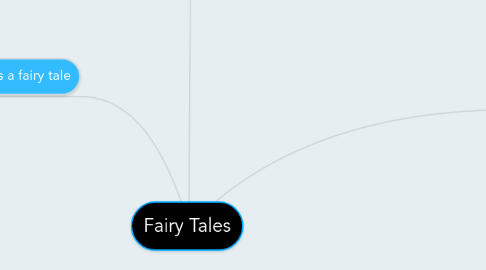
1. What is a fairy tale
1.1. A fairy tale is a type of short story that typically features folkloric fantasy creatures
1.2. Fairy tale language seems to be the international language of all mankind - of all ages and of all races and cultures
1.2.1. Marie Louise Von Franz - interpretations of fairy tales
1.3. A social state is part of, and inseparable from, the sum total of arts, knowledge, organisation and customs which we call the civilisation, or the stage of civilisation, of a poeple
1.3.1. Edwin Sidney Hartland - science of fairy tales
1.4. Fairy tales teach and guide people of all ages, one of the most amazing aspects is that although they change over time they still remain fundamentally the same
1.5. Fairy tales are constantly rearranged and transformed to suit changes in tastes and values, and they assume mythic proportions when they are frozen in an ideological constellations that makes it seem that there are universal absolutes that are divine and should not be changed
1.5.1. Jack Zipes
1.6. The magic captures a child's imagination, the happy endings give children hope, and they teach everyone that being good brings rewards. They also indoctrinate children in ideals that may be outmoded given the dramatic economic, social and cultural changes over the past two centuries
2. The Origin of Fairy Tales
2.1. Part of oral story telling which encompassed myth, legend and folklore
2.2. Once published they became known as literary fairy tales
2.3. Charles Perrault
2.3.1. histoires ou contes du temps passe avec des moralites: contes de ma mere l'oye
2.3.1.1. He is responsible for most of what we know about sleeping beauty. Drew on an Italian tale called SUN MOON AND TALIA, in which a princess falls into a deep sleep and a passing king rapes and impregnates her. The only thing to wake her is one of her twins accidentally suckling on her finger.
2.4. Madame d'Aulnoy
2.4.1. conte de fees - MOTHER OF FAIRY TALES
2.5. Brothers Grimm
2.5.1. first writers to collect and preserve oral tales in their - Kinder und hausmarchen
2.6. Hans Christian Anderson
2.6.1. wrote mainly original work - fairy tales told for children
2.7. Based upon a wide variety of beliefs, rites, values and experiences of pagan people
2.8. They encompass social and political conditions of society at the time of writing
2.9. Donald Haase
2.9.1. for some, the term denotes a specific narrative form easily identified characteristics but for others it suggests not a single genre but an umbrella category under which a variety of other forms can be grouped.
2.10. Fairy tales began as oral folklore
2.10.1. Zipes: 'Tales of initiation, worship, warning and indoctrination'
3. The two ways in which women are portrayed
3.1. Princesses
3.1.1. Beautiful, generous, eternally youthful, full of love
3.1.1.1. Dr Silima Nanda - the portrayal of women in the fairy tales
3.1.2. women are expected to be subservient, bearing and taking control of children. Women are weak and vulnerable and only succeed when men intervene. Women are soft or need support.
3.1.2.1. Huffington Post - fairy tales and gender stereotypes
3.1.3. unequivocally beautiful, kind, and compassionate. She does not complain or get angry, instead she takes her burdens as they come. She is also naive and foolish but she never tries to save herself
3.1.3.1. Henal Patel - Gender roles indoctrinated through fairy tales in western civilisation
3.1.4. A study of the evolution of 168 tales that came from 1857 found a strong correlation between the number of times the appearance of the female lead was stated and its rate of reproduction
3.1.4.1. Baker 2003
3.2. Old women
3.2.1. Evil, ugly (both inside and out), scheming, above gender. This is because patriarchal societies attempt to subjugate women and discourage acting out against societies norms
3.2.1.1. Dr Silima Nanda - the portrayal of women in fairy tales
3.2.2. Old women villains are especially scary because (historically) the most powerful person in the child's life was the mother
3.2.2.1. NPR- why are old women often the face of evil in fairy tales and folklore
3.2.3. Cunning and ambitious, malicious and jealous. She will go to any means to achieve her end. If a woman shows agency and takes action she is automatically evil.
3.2.3.1. Henal Patel - Gender roles indoctrinated through fairy tales in western civilisation
